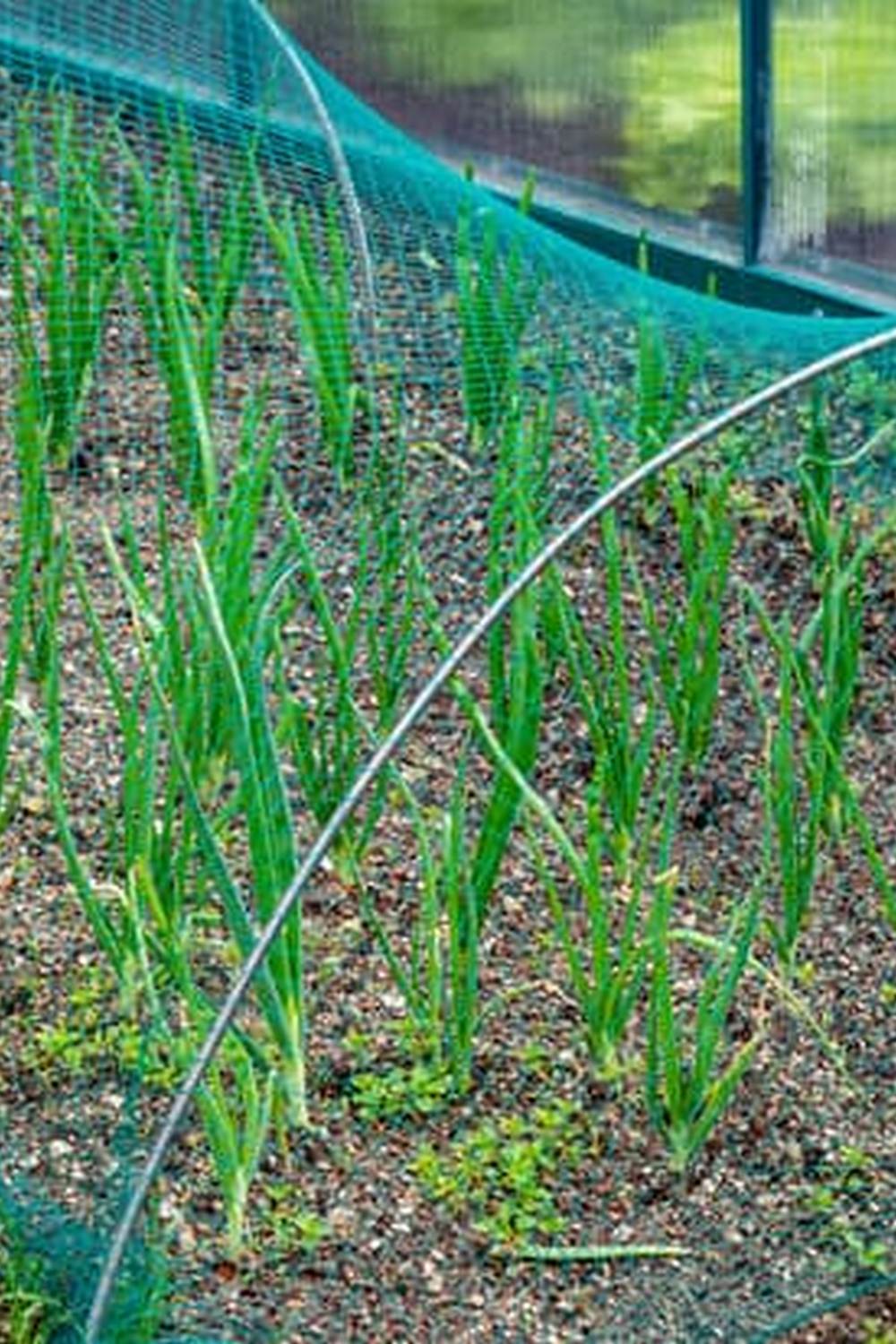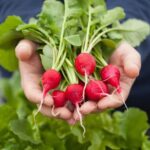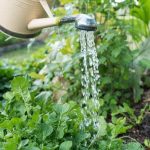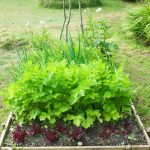South Florida vegetable gardening offers a unique and rewarding experience for both seasoned gardeners and beginners alike. With its sunny climate and rich soil, South Florida provides the perfect environment for cultivating a variety of fresh, flavorful vegetables right in your own backyard. Whether you’re looking to grow your own produce for sustainability or simply enjoy the pleasure of harvesting your own crops, South Florida is a fruitful place to explore the world of vegetable gardening.
In this guide, we will explore the best vegetables to grow in South Florida, the ideal location and soil conditions for successful gardening, seasonal planting tips, pest and disease management strategies, as well as the importance of watering and irrigation in South Florida’s climate. Additionally, we’ll provide insights on successful harvesting techniques and storage methods for your South Florida-grown vegetables.
From community resources and events to sustainable practices, this guide aims to equip you with everything you need to create a thriving vegetable garden in your own backyard.
Whether you’re a novice gardener looking to get started or a seasoned pro seeking new techniques, South Florida vegetable gardening has something to offer everyone. With an abundance of resources and information available, you can embark on a journey towards promoting the benefits of vegetable gardening in South Florida while enjoying the satisfaction of growing your own fresh, healthy produce right at home.
Best Vegetables to Grow in South Florida
When it comes to South Florida vegetable gardening, choosing the right vegetables to grow can make a significant impact on the success of your garden. Due to the unique climate and growing conditions in South Florida, some vegetables thrive better than others. Here are some of the best vegetables to consider planting in your South Florida garden:
Tomatoes
Tomatoes are a popular choice for South Florida vegetable gardens due to their versatility and high productivity. They require full sun and well-drained soil to thrive. Varieties like cherry tomatoes, plum tomatoes, and beefsteak tomatoes are excellent options for South Florida gardeners.
Peppers
Peppers, including bell peppers, jalapenos, and sweet banana peppers, also do well in South Florida’s warm climate. They prefer well-draining soil rich in organic matter and plenty of sunlight. Peppers can be grown throughout the year in South Florida with proper care.
Squash
Summer squash varieties like zucchini and yellow squash are great options for South Florida vegetable gardens. They are fast-growing and produce abundant yields when provided with ample sunlight and regular watering. Winter squash varieties like butternut squash can also be grown in South Florida during the cooler months.
By selecting the right vegetables to grow in your South Florida garden, you can ensure a bountiful harvest throughout the year. Remember to consider factors like sunlight exposure, soil quality, and water requirements when planning your vegetable garden in South Florida.
Ideal Location and Soil Conditions for Successful Vegetable Gardening
South Florida vegetable gardening offers a unique set of challenges and opportunities when it comes to selecting the ideal location and soil conditions for successful growth. One key factor to consider is the abundance of sunlight in South Florida, which is essential for most vegetable plants to thrive. Selecting a location that receives at least 6-8 hours of direct sunlight per day is crucial for optimal plant growth and development.
In terms of soil conditions, South Florida typically has sandy soil with poor water retention capabilities. To improve soil quality, gardeners can incorporate organic matter such as compost, manure, or peat moss into the soil to increase its nutrient content and water-holding capacity. Additionally, incorporating mulch around plants can help retain moisture in the soil, reduce weed growth, and regulate soil temperature.
When selecting an ideal location for your South Florida vegetable garden, it is also important to consider proximity to water sources for irrigation purposes. Given the hot and humid climate of South Florida, regular watering is essential for the health and productivity of vegetable plants.
Having access to a reliable water source such as a hose or irrigation system will make it easier to maintain consistent moisture levels in the soil, especially during dry periods. By taking these factors into consideration when choosing a location and preparing your soil, you can set yourself up for success in your South Florida vegetable gardening endeavors.
Seasonal Planting Guide for South Florida
South Florida has a unique climate that allows for year-round vegetable gardening. Understanding the seasonal planting guide can help maximize your harvest and ensure a successful garden. In South Florida, the main growing seasons are fall/winter and spring/summer.
During the fall/winter season, cool-season vegetables like broccoli, carrots, lettuce, and peas thrive in the milder temperatures. On the other hand, warm-season vegetables such as tomatoes, peppers, cucumbers, and squash do well during the spring/summer season when the weather is hot and humid.
It is essential to plan your planting schedule according to these seasons to make the most of South Florida’s climate. The University of Florida Extension provides a detailed planting guide specific to South Florida, outlining when to plant each type of vegetable for optimal growth. Additionally, using raised beds or containers can help control soil temperature and moisture levels, especially during the hot summer months.
One key aspect to keep in mind when following the seasonal planting guide for South Florida vegetable gardening is proper crop rotation. Rotating crops helps prevent soil-borne diseases and maintains soil fertility by varying nutrient demands. By following a well-thought-out planting schedule based on seasons and incorporating crop rotation practices, you can enjoy a bountiful harvest from your South Florida vegetable garden year-round.
| South Florida Vegetable | Recommended Planting Season |
|---|---|
| Tomatoes | Spring/Summer |
| Lettuce | Fall/Winter |
| Peppers | Spring/Summer |
Pest and Disease Management for South Florida Vegetable Gardens
Pest and disease management is a key aspect of successful South Florida vegetable gardening. Due to the warm and humid climate in the region, pests and diseases can thrive if not properly managed.
One common pest in South Florida vegetable gardens is the whitefly, which can cause damage to crops such as tomatoes, cucumbers, and squash. To control whiteflies and other pests, it is important to regularly inspect plants for signs of infestation and take appropriate measures such as using insecticidal soap or neem oil.
In addition to pests, South Florida vegetable gardens may also be vulnerable to various diseases such as powdery mildew, leaf spot, and root rot. These diseases can weaken plants and reduce crop yields if left unchecked.
To prevent disease outbreaks, gardeners should practice good sanitation habits such as removing diseased plant debris promptly and rotating crops annually to reduce the buildup of pathogens in the soil. It is also important to choose disease-resistant varieties when possible and avoid planting vegetables too closely together to improve air circulation.
Implementing integrated pest management (IPM) techniques can help minimize the use of chemical pesticides while effectively managing pests and diseases in South Florida vegetable gardens. This approach involves monitoring pest populations, encouraging beneficial insects that prey on pest species, using physical barriers like row covers, and employing cultural practices such as crop rotation. By adopting a holistic approach to pest and disease management, South Florida gardeners can maintain healthy vegetable crops throughout the growing season.
Importance of Watering and Irrigation in South Florida’s Climate
South Florida’s unique climate poses specific challenges when it comes to watering and irrigation in vegetable gardening. With its hot and humid weather, proper hydration is essential for the success of your crops. Here are some key points to consider when it comes to watering and irrigation in South Florida vegetable gardens:
- Use drip irrigation systems: In South Florida, where evaporation rates can be high, using a drip irrigation system can help deliver water directly to the roots of your plants, reducing wastage and ensuring efficient hydration.
- Water deeply and infrequently: Instead of shallow daily watering, it’s recommended to water deeply but less frequently. This encourages the roots to grow deeper into the soil in search of water, making your plants more resilient to dry spells.
- Consider rain barrels: Harnessing the power of rainwater by using rain barrels can provide a sustainable source of water for your vegetable garden. This not only conserves water but also reduces your utility bill.
In addition to these strategies, it’s important to adjust your watering schedule based on the season and specific needs of each crop. For example, during periods of high temperatures or drought, you may need to increase the frequency of watering to prevent wilting and dehydration in your vegetables. Monitoring soil moisture levels regularly can also help you make informed decisions about when and how much to water.
Overall, proper watering and irrigation practices are crucial for the health and productivity of your South Florida vegetable garden. By implementing these techniques and staying attentive to the changing environmental conditions, you can ensure a bountiful harvest year-round in this tropical paradise conducive for lush vegetation. So dive into south florida vegetable gardening today.
Tips for Successful Harvesting and Storage of South Florida Vegetables
Harvesting and storing your South Florida vegetables properly is crucial to maintaining their freshness and flavor. Here are some essential tips to help you make the most out of your bountiful harvest:
- Harvest at the Right Time: It’s important to pick your vegetables at the peak of ripeness for the best taste and nutrition. Be sure to check each plant’s specific harvesting guidelines, as different vegetables have different indicators of readiness.
- Handle with Care: When harvesting your vegetables, handle them gently to avoid bruising or damaging the produce. Use a sharp knife or shears to cut the vegetables from the plant, rather than pulling or twisting them off.
- Proper Storage: After harvesting, it’s crucial to store your vegetables correctly to prolong their shelf life. Some vegetables do well stored in the refrigerator, while others thrive when kept in a cool, dark place like a root cellar or pantry.
Storing South Florida vegetables properly can help extend their freshness and flavor for weeks, allowing you to enjoy the fruits of your labor long after harvest season is over. By following these tips for successful harvesting and storage, you can ensure that your South Florida vegetable garden continues to provide you with nutritious and delicious produce throughout the year.
Remember that practicing good harvesting and storage techniques is key to getting the most out of your South Florida vegetable gardening efforts. With proper care from garden to table, you can savor the flavors of your homegrown produce while reaping all the benefits of gardening in beautiful South Florida.
Community Resources and Events for South Florida Vegetable Gardeners
Engaging with the local community can enhance your experience as a South Florida vegetable gardener. There are various resources and events available that can provide valuable information, support, and opportunities to connect with other gardening enthusiasts. One such resource is the South Florida Vegetable Gardening Association, which offers workshops, online forums, and newsletters to help gardeners stay informed and inspired.
Another great way to get involved in the South Florida vegetable gardening community is by participating in local events such as farmers markets, plant swaps, and garden tours. These events not only allow you to showcase your own produce and learn from other gardeners but also foster a sense of camaraderie among like-minded individuals. Additionally, many of these events feature expert speakers who can provide valuable insights on best practices for successful vegetable gardening in the region.
In addition to organizations and events, social media platforms have become increasingly popular tools for connecting with fellow South Florida vegetable gardeners. Joining local gardening groups on platforms like Facebook or Instagram can provide a virtual space to ask questions, share tips and tricks, and celebrate successes with a supportive online community.
By taking advantage of these community resources and events, you can enrich your gardening experience and cultivate meaningful connections with others who share your passion for south florida vegetable gardening.
| Resources | Events |
|---|---|
| South Florida Vegetable Gardening Association | Farmers Markets |
| Local gardening groups on social media | Plant Swaps |
| Workshops and online forums | Garden Tours |
Sustainable Practices for South Florida Vegetable Gardening
Composting for Soil Enrichment
One sustainable practice that is essential for successful South Florida vegetable gardening is composting. Composting not only reduces waste but also helps enrich the soil with valuable nutrients that are necessary for plant growth.
By creating a compost pile using kitchen scraps, yard waste, and other organic materials, gardeners can improve soil fertility and structure, leading to healthier plants and higher yields. Regularly adding compost to the garden beds can also help retain moisture and reduce the need for additional fertilizers.
Utilizing Natural Pest Control Methods
In South Florida, where pests can be quite a challenge for vegetable gardeners, utilizing natural pest control methods is crucial for sustainable gardening practices. Instead of relying on chemical pesticides that can harm beneficial insects and pollinators, consider using companion planting techniques to naturally repel pests or attract beneficial insects to the garden. Additionally, implementing physical barriers like row covers or handpicking pests can help keep infestations under control without resorting to harmful chemicals.
Water Conservation Techniques
Given the unique climate of South Florida, water conservation is a key aspect of sustainable vegetable gardening practices in the region. Implementing techniques such as drip irrigation systems or soaker hoses can help deliver water directly to the plant roots where it’s needed most, minimizing water waste through evaporation or runoff.
Collecting rainwater in barrels and utilizing mulch around plants can also help retain soil moisture and reduce the frequency of watering needs in the garden. By adopting these water conservation practices, South Florida vegetable gardeners can promote sustainability while preserving precious water resources in the region.
Conclusion
In conclusion, South Florida vegetable gardening offers a plethora of benefits for both individuals and communities. Not only does it provide a sustainable source of fresh produce, but it also promotes healthy eating practices and fosters a sense of community among gardeners. By cultivating their own vegetables, residents of South Florida can take pride in reducing their carbon footprint and contributing to a greener environment.
Moreover, engaging in South Florida vegetable gardening can serve as a learning opportunity for individuals of all ages. From planting to harvesting, the process allows gardeners to develop a deeper understanding of where their food comes from and the effort required to cultivate it. This hands-on experience not only educates but also instills a greater appreciation for the labor that goes into producing fresh, nutritious vegetables.
Additionally, the act of vegetable gardening in South Florida can be a therapeutic endeavor, offering stress-relief and relaxation amidst the hustle and bustle of everyday life. It provides an opportunity to connect with nature and immerse oneself in the beauty of growing plants. As more individuals discover the joys and rewards of tending to their own garden, the practice of South Florida vegetable gardening will continue to flourish, benefiting both individuals and communities alike.
Frequently Asked Questions
When Should I Start a Vegetable Garden in South Florida?
In South Florida, it is recommended to start a vegetable garden in the fall or winter months. This is because the cooler temperatures during these seasons are more favorable for many vegetable plants to thrive. Starting your garden during this time allows the plants to establish themselves before the intense heat of summer arrives.
What Vegetables Grow in the Summer in South Florida?
Some vegetables that grow well in the summer in South Florida include okra, sweet potatoes, cucumbers, and peppers. These vegetables are well-suited to the hot and humid climate of South Florida and can tolerate the high temperatures of summer. Proper watering and maintenance are crucial to their success during this season.
What Crops Should Be Grown in What Season in South Florida?
Certain crops should be grown in specific seasons in South Florida to optimize their growth and yield. For example, cool-season crops like lettuce, broccoli, and carrots should be grown in the fall and winter when temperatures are milder.
Warm-season crops such as tomatoes, squash, and beans are best planted in the spring after the danger of frost has passed. Understanding which crops thrive in each season will help you plan your garden effectively for a successful harvest.

If you’re looking to get into vegetable gardening, or are just looking for some tips on how to make your current garden better, then you’ve come to the right place! My name is Ethel and I have been gardening for years. In this blog, I’m going to share with you some of my best tips on how to create a successful vegetable garden.





